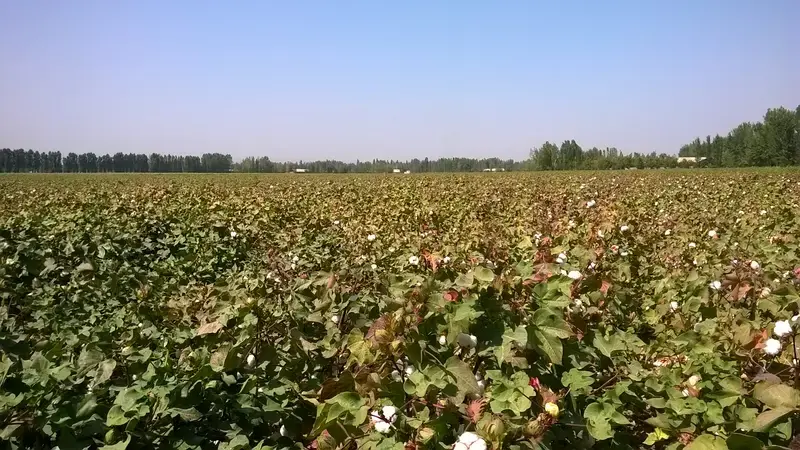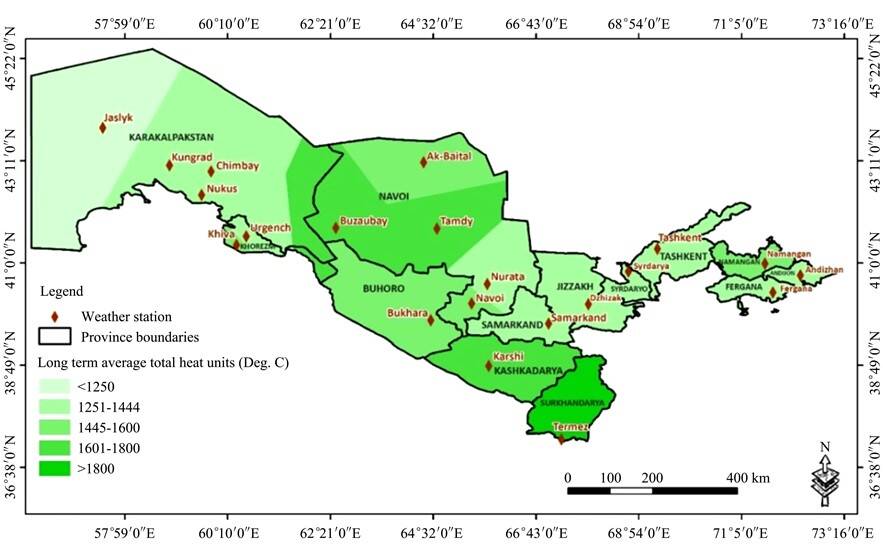Heat's Impact on Cotton Production in Uzbekistan

A recently published ICARDA-led study on cotton in Uzbekistan shows that cotton-producing regions situated at lower elevations and latitudes are more productive than those higher up in the mountains.
To obtain this result, the scientists compared long-term average heat units – the accumulative amount of daily heat energy a crop will be exposed to during its entire growth cycle, from planting to harvesting – and established a cutoff threshold of Total Heat Unit (THU) at 1444°C.
Because there is a direct correlation between the air temperature and the ability of the cotton plant to develop well, regions below 1444°C of THU are not ideally suited for cotton crop cultivation. Similarly, a higher THU results in increased productivity.
Suppose the heat accumulated daily between April 15 - the optimal planting date for cotton confirmed by this study- and mid-October during harvest is above 1444°C. In that case, the cotton yield is likely to be greater than in all the areas under that level of THU.

Long-term average total heat units in Celsius (THU) for each weather station location (planting date April 15)
This is an important finding for a country that remains a global cotton giant. It is the sixth-largest producer of the raw commodity worldwide and the fifth-largest exporter of white gold, extensively used in the textile industry, to manufacture fishing nets – even banknotes.
Under State control, cotton grows on 40% of Uzbekistan’s irrigated lands, covering approximately 1.17 million hectares in 2018-2019. The Uzbek government determines the crop’s price, the surface dedicated to its cultivation, and the annual production targets.
Despite its prominence, the Central Asian Republic’s cotton productivity is below the region’s average. The government is now set to identify the country’s least productive cotton-producing areas to grow other crops, such as fruits and vegetables.
This study is thus crucial to inform decision-makers on where the prime cotton-producing regions are and areas where the yield gap is the widest. The latter is where the Uzbek government should focus its crop conversion efforts.
---------------------------
This research was carried out by ICARDA and conducted as part of the CGIAR Research Program on Dryland Systems which was supported by contributors to the CGIAR Trust Fund.
